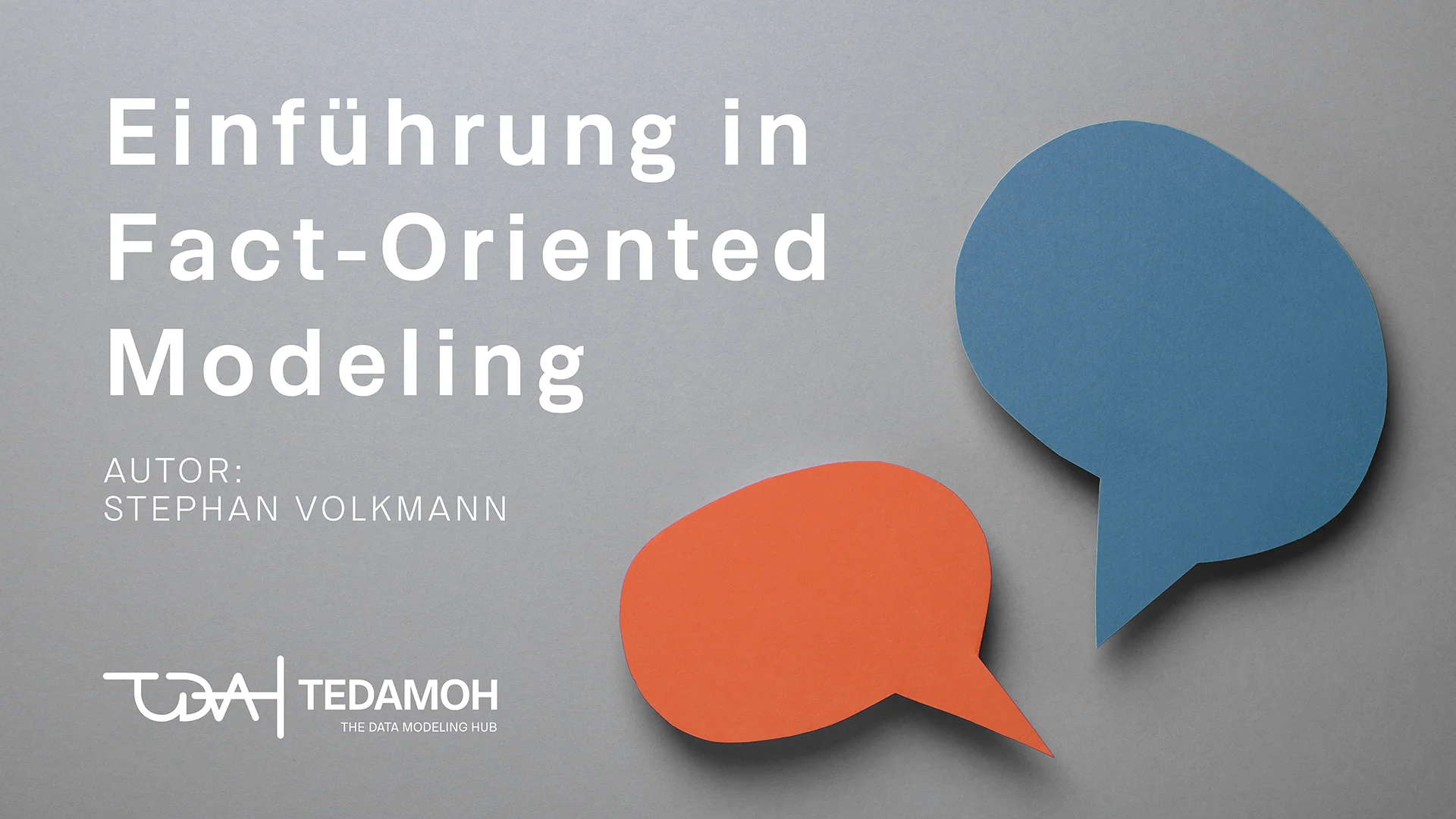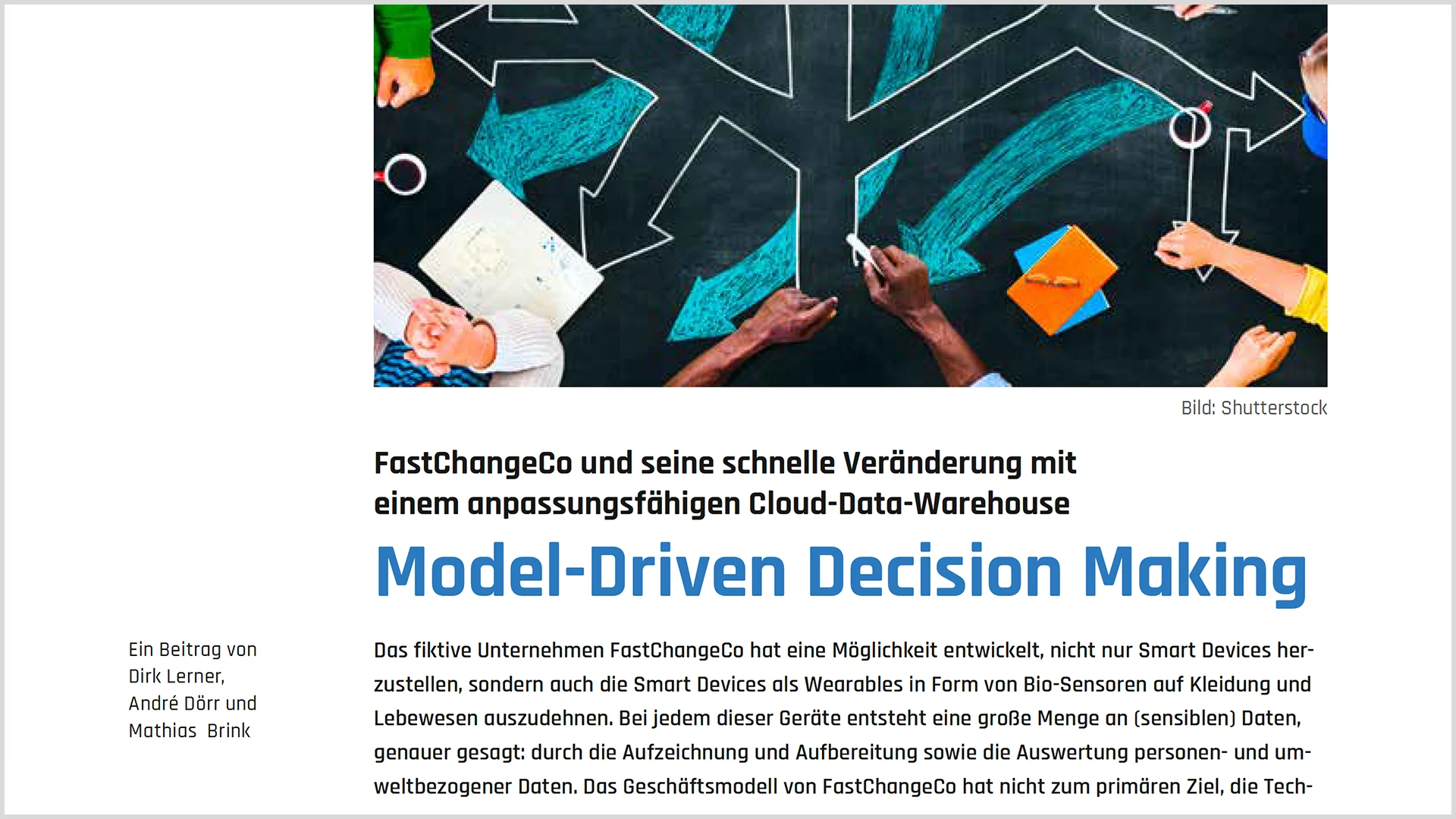FOM
-
Fact-Oriented Modeling

Information Modeling in Natural LanguageHow can I use natural language in my modeling process to achieve high-quality information models?
The answer to your question is Fact-Oriented Modeling (FOM). This is a family of conceptual methods in which facts are modeled precisely as relationships with an arbitrary number of arguments. This type of modeling makes it easier to understand the model, because natural language is used to create the data model. That's what makes FOM fundamentally different from all other modeling methods. This approach sounds new and exciting. However, its basic features date back to the 1970s.
-
Fact-Oriented Modeling (FOM) - Family, History and Differences

Months ago I talked to Stephan Volkmann, the student I mentor, about possibilities to write a seminar paper. One suggestion was to write about Information Modeling, namely FCO-IM, ORM2 and NIAM, siblings of the Fact-Orietented Modeling (FOM) family. In my opinion, FOM is the most powerful technique for building conceptual information models, as I wrote in a previous blogpost Sketch Notes Reflections at TDWI Roundtable with FCO-IM.
-
Faktenorientierte Modellierung

Information Modeling in natürlicher SpracheWie kann ich natürliche Sprache in meinem Modellierungsprozess verwenden, um qualitativ hochwertige Informationsmodelle zu erstellen?
Die Antwort auf Ihre Frage lautet faktenorientierte Modellierung (Fact-Oriented Modeling, FOM). Dies ist eine Familie von konzeptuellen Methoden, bei denen die Fakten präzise als Beziehungen mit beliebig vielen Argumenten modelliert werden. Diese Art der Modellierung ermöglicht ein einfacheres Verständnis des Modells, da zur Erstellung des Datenmodells natürliche Sprache verwendet wird. Dies unterscheidet FOM auch grundlegend von allen anderen Modellierungsmethoden. Dieser Ansatz hört sich neu und spannend an. Er geht jedoch in Grundzügen bereits in die 1970er-Jahre des vorigen Jahrhunderts zurück.
-
FOM
Fact-Oriented Modeling (FOM) stands for a family of fact-oriented conceptual modeling methods. FOM facilitates easier communication about the conceptual model between the modeler and the domain expert by verbalization of concrete examples in the language of the domain expert, a design process as a guide for creating the model and the focus on elementary facts. The most popular methods in this family are Cognition Enhanced Natural Language Information Analysis Method (CogNIAM), Second Generation Object Role Modeling (ORM 2) and Fully Communication Oriented Information Modeling (FCO-IM).
-
Knowledge Gap 2020

I, Stephan, am very happy that I'm invited to give a presentation at the Knowledge Gap 2020 in Munich.
My presentation is about advanced techniques in Fact-Oriented Modeling.
Often data models are built with a technical focus, because they need to be delivered fast or must meet various technical requirements. Therefore, the business aspect and the meaning of objects and relationships are swept under the table. But then the business domain later hardly understands the data model and has problems to work with it in own applications or reports – which often results in a redesign of the data model and renewed time and cost expenditures.
-
Model-Driven Decision Making

FastChangeCo - ein anpassungsfähiges Data-Warehouse für schnelle Veränderungen
Das fiktive Unternehmen FastChangeCo hat eine Möglichkeit entwickelt, nicht nur Smart Devices herzustellen, sondern auch die Smart Devices als Wearables in Form von Bio-Sensoren auf Kleidung und Lebewesen auszudehnen. Bei jedem dieser Geräte entsteht eine große Menge an (sensiblen) Daten, genauer gesagt: durch die Aufzeichnung und Aufbereitung sowie die Auswertung personen- und umweltbezogener Daten. -
Model-Driven Decision Making

FastChangeCo - an adaptable data warehouse for rapid changes
The fictitious company FastChangeCo has developed a way not only to manufacture smart devices, but also to extend smart devices to clothing and living beings as wearables in the form of bio-sensors. Each of these devices generates a large amount of (sensitive) data, more precisely: through the recording, processing and analysis of personal and environmental data.
